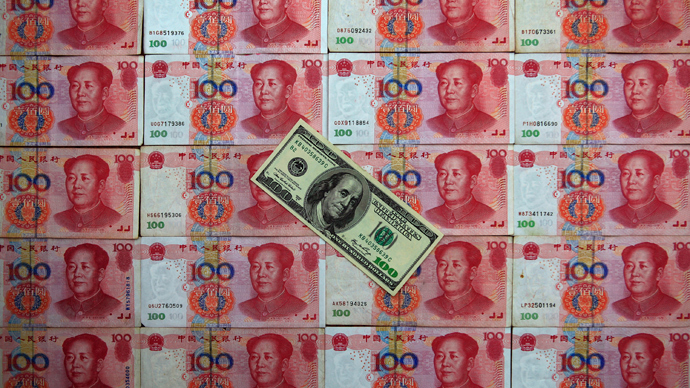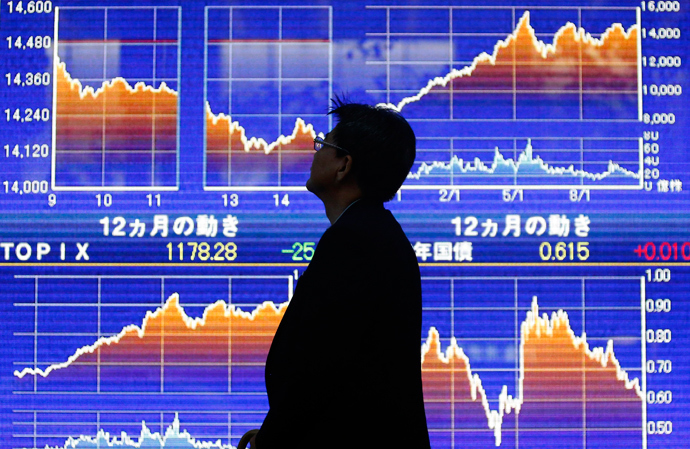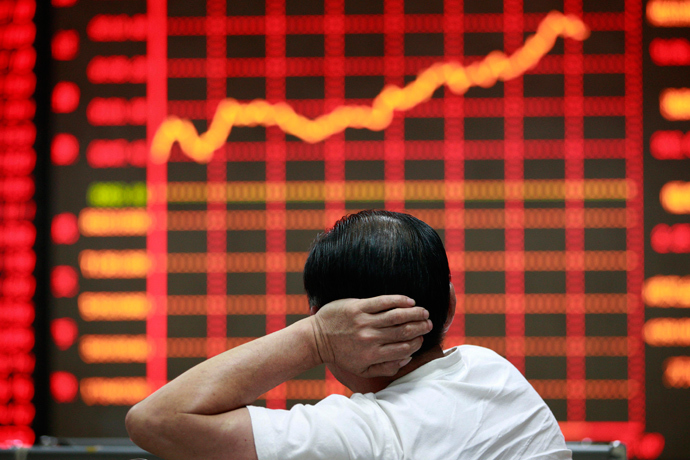Renminbi rising: China’s ‘de-Americanized world’ taking shape?

China’s leadership will soon usher in bold reforms to support a domestic consumption-driven economic model, and globalizing the renminbi as an alternative store of wealth to the US dollar is at the center of the strategy.
The scathing commentary
published by China’s state-owned Xinhua news agency calling for a
‘de-Americanized world’ was undoubtedly music to the ears
of many in the developing world. The article – published during
the recent fiscal deadlock – accused Washington of abusing its
superpower status by engaging in unwarranted military conflicts,
engineering regime changes with impunity, and mishandling its
status as the issuer of the world reserve currency by exporting
risk abroad. Xinhua’s commentary also called for drastic reforms
of the IMF and World Bank to reflect the growing muscle of the
developing world, and most significantly, “the introduction of
a new international reserve currency that is to be created to
replace the dominant US dollar.”
The planned reforms led by the Xi Jinping administration in Beijing should be viewed through the lenses of the position taken by this article, with the end goal being the full convertibility and internationalization of the renminbi.
China’s renminbi as a ‘third leg’
Beijing interprets the global economy resting on highly unsound foundations – the US dollar and the Euro – and it would like to engineer a smooth transition toward a multipolar economic system where the renminbi can act as a third leg to support this structure.
China is already the world's largest trading nation, exporter, and creditor, and it is soon expected to overtake the US as the largest oil importer and the world’s largest economy, but further institutional and regulatory reform is needed to mitigate risk and increase efficiency before the renminbi can contend as a top trading currency.
Beijing has specifically cited the goal of full renminbi convertibility in its most recent five-year plan in 2011, which would allow foreign currencies to be exchanged for renminbi without any state-intervention or restriction on the amount. The long-term strategy to globalize the renminbi is based on a three-pronged approach – emboldening it as a global trade settlement currency, then as a global investment currency or a store of wealth, and ultimately as a global reserve currency that can replace or serve as an alternative to the US dollar.

Prior to 2009, the renminbi was strictly controlled by Beijing and had little exposure to international markets, with trade generally denominated in US dollars.
China concluded that adhering to this status quo was not in its interests, and launched pilot schemes that allowed controlled offshore renminbi markets to develop in Hong Kong and Macau, eventually expanding to include markets in foreign countries and currency swap deals.
China is already making significant progress in establishing the renminbi as a global trade settlement currency, nearly 12 percent of Chinese exports and imports are settled in renminbi, a six-fold increase in three years, while renminbi denominated corporate bonds have become freely available to international companies. China also has currency swap agreements with around 20 countries, including Russia and Japan, allowing trade to be settled directly in renminbi instead of US dollars.
Convertibility restrictions remain in place over concerns that excessive hot-money inflows and outflows could threaten the economy, but Beijing is allowing the recently-opened Shanghai free-trade zone to serve as a testing ground for the wider convertibility of the renminbi and market-oriented policies, a precursor to the currency's integration into the global economy.
‘Reform is about cutting government power’
China's growth figures have rebounded to 7.8 percent from their lowest point in two-decades, and policy-makers in Beijing know that there will be trouble if the slowdown is not prudently managed.
As wages rise, the task at hand is guiding the economy away from the export-driven low-wage manufacturing model, and toward a domestic consumption-driven model with a strong service sector and greater welfare policies to care for the ageing population – an extremely complex task that will challenge generations of Chinese leaders to come, especially as Beijing must also hedge against a volatile US dollar-dominated external climate and a domestic credit bubble.
The Communist Party is set to unveil significant reforms to support this transition in November, which are reported to be the most dramatic rolling back of state-authority over economic affairs yet seen in China, most notably by opening some state-sector monopolies to private competition and investment. Beijing’s strategy is to further open industries up to privatization so firms can operate with greater administration freedom to spur entrepreneurial activity, rather than functioning like arms of government bureaucracy that they are often accused of.
Due to rising labor costs and the investment flight that may follow, establishing new sources of productivity will be a principle objective of reforms, in addition to deregulating foreign investment quotas and loosening controls on stock and bond markets. China’s Premier Li Keqiang stated earlier this year that, "Reform is about cutting government power. It is a self-imposed revolution that will require real sacrifice, and it will be painful."

Beijing should cautiously pursue these measures so as not to undermine the hybrid economic model that has given it the ability to maintain leverage with banks and large state companies during times of crisis to increase lending and investment when needed.
Given China’s gradualist approach to reform, control over state institutions will shift from direct control to indirect control for the foreseeable future to balance the state’s influence on the market. Furthermore, the liberalization of interest rates and appreciation of exchange rates is seen as an inevitable measure to bring about price convergence to curb domestic inflation and asset bubbles. The appreciation and revaluing of the renminbi and a floating exchange rate system with reference to a currency basket is to be expected sooner or later.
Goodbye greenback, Hello redback
Although the exact amount of China’s gold reserves isn’t known, it is expected to have a few thousand tonnes of the precious metal. Demand for gold in China has skyrocketed by almost 350 percent since 2008, and according a 2011 cable made available by WikiLeaks, Beijing believes that the US is actively suppressing the price of gold to maintain the US dollar's role as the international reserve currency, and that increasing its gold reserves will promote the internationalization of the renminbi.
Given the increasing demand for gold, its prices are declining when they should otherwise be soaring, suggesting that Wall Street banks are acting on Washington’s behest to manipulate the gold price through the unregulated trading of paper gold derivatives. These measures signify the US dollar’s state of ill health, and the extent of manipulation implies that a panic dumping of dollar assets and US Treasury bonds would ensue if the gold price soared to its genuine market value, spelling the end of US dollar domination. It is little wonder why China has put so much emphasis on hasty currency reforms.
The brinksmanship behind the US government shutdown, the perpetual raising of the debt ceiling, the perpetual borrowing and endless money printing have all caused an erosion of trust in the US dollar.
Dwindling confidence in the US financial system has made renminbi-denominated trade settlements a more common feature. China has recently arranged such settlements with Singapore, Australia and the European Central Bank, while London is positioning itself to become an offshore renminbi-banking center. HSBC predicts that the renminbi will be the third-largest unit used for trade by 2015 and fully convertible within the next five years, and as China’s consumption of raw materials continues to increase, the renminbi will inevitably replace the dollar as the primary currency for international trading in commodities and resources in the years to come.
The statements, views and opinions expressed in this column are solely those of the author and do not necessarily represent those of RT.
The statements, views and opinions expressed in this column are solely those of the author and do not necessarily represent those of RT.













